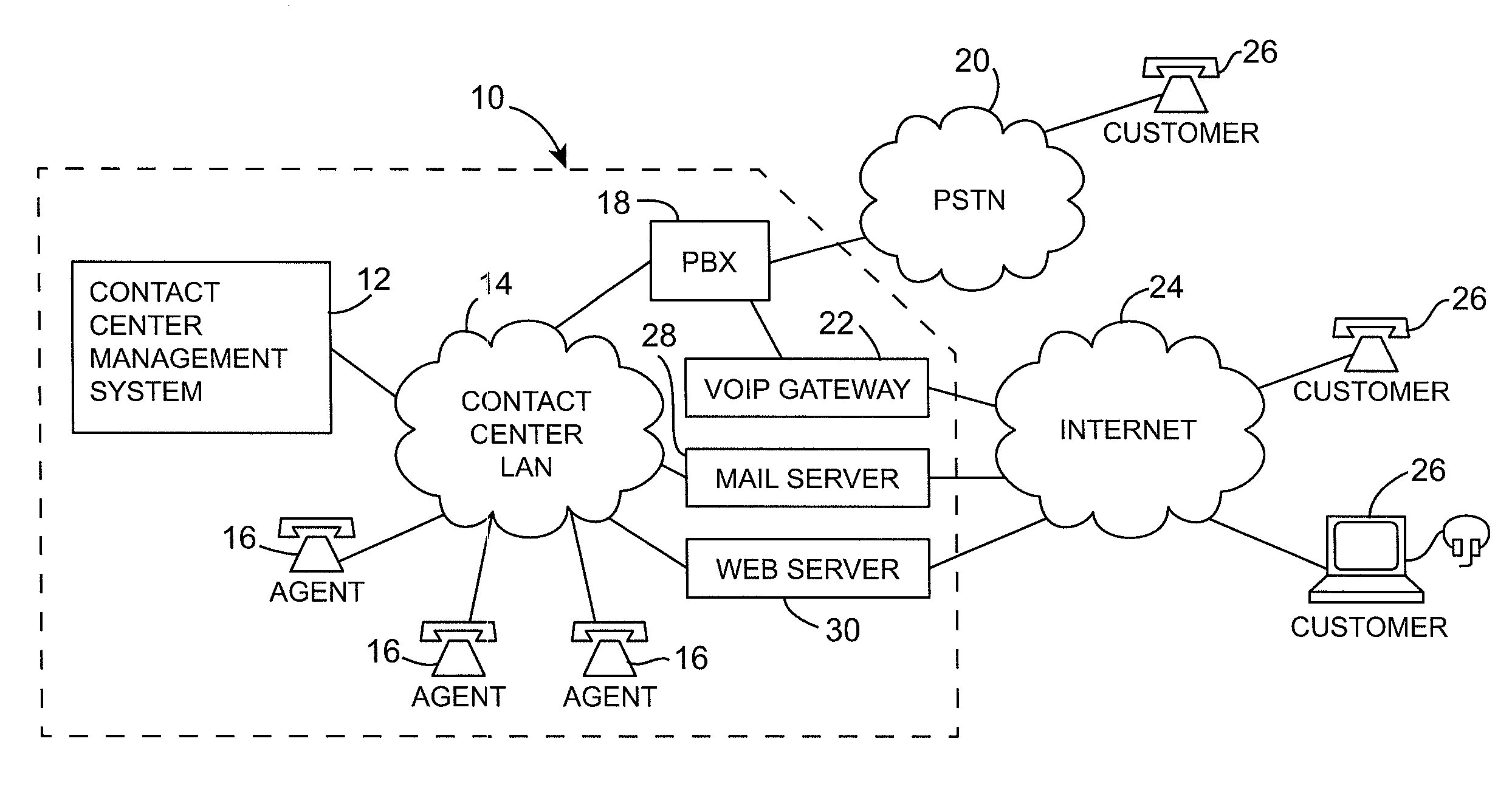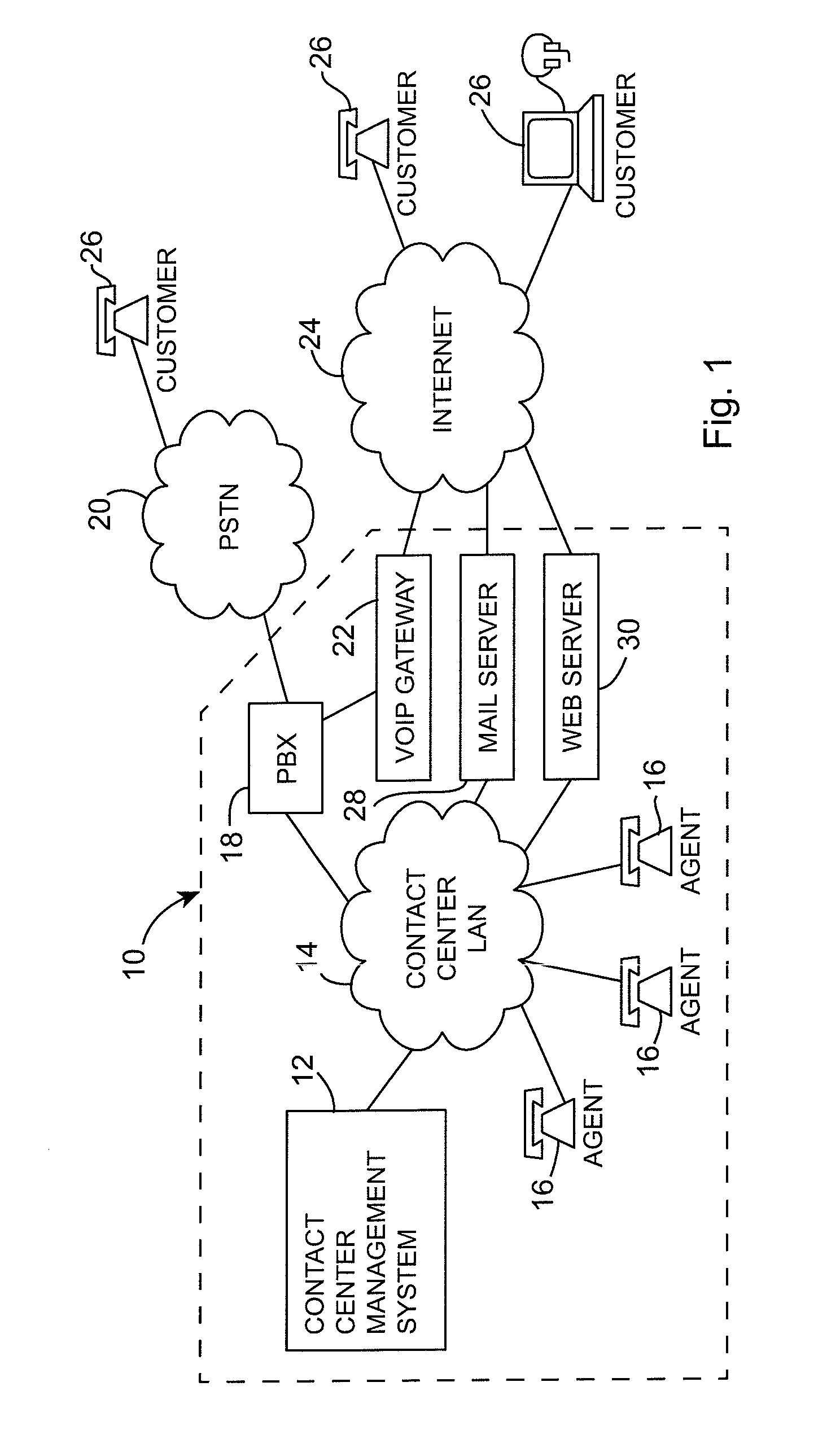Semantic contact center management
a contact center management and semantic technology, applied in the field of contact center management methods and contact center systems, can solve the problems of inflexible script-based systems to control the flow of contacts within the contact center, inconsistency of methods across multiple vendors, and inability to meet the needs of third-party standards-based analysis tools
- Summary
- Abstract
- Description
- Claims
- Application Information
AI Technical Summary
Benefits of technology
Problems solved by technology
Method used
Image
Examples
Embodiment Construction
[0043]FIG. 1 shows the overall architecture of a contact center and the infrastructure used by customers to connect to the contact center.
[0044]The contact center is indicated generally at 10 and comprises a contact center management system 12 which will be described in further detail below. The management system 12 is connected via a contact center local area network (LAN) 14 (also referred to as an agent LAN) to a number of agent workstations 16. The agent workstations can be simple telephone extensions or increasingly commonly, they are multimedia terminals allowing the agents to handle not only voice calls but also chat sessions, emails and instant messaging sessions.
[0045]Telephone calls to and from the contact center 10 are controlled by a private branch exchange or PBX 18 which is connected to the public switched telephone network (PSTN) 20 and, via a Voice over Internet Protocol (VoIP) gateway 22, to the Internet 24. The PBX function could alternatively be provided by a soft...
PUM
 Login to View More
Login to View More Abstract
Description
Claims
Application Information
 Login to View More
Login to View More - R&D
- Intellectual Property
- Life Sciences
- Materials
- Tech Scout
- Unparalleled Data Quality
- Higher Quality Content
- 60% Fewer Hallucinations
Browse by: Latest US Patents, China's latest patents, Technical Efficacy Thesaurus, Application Domain, Technology Topic, Popular Technical Reports.
© 2025 PatSnap. All rights reserved.Legal|Privacy policy|Modern Slavery Act Transparency Statement|Sitemap|About US| Contact US: help@patsnap.com



